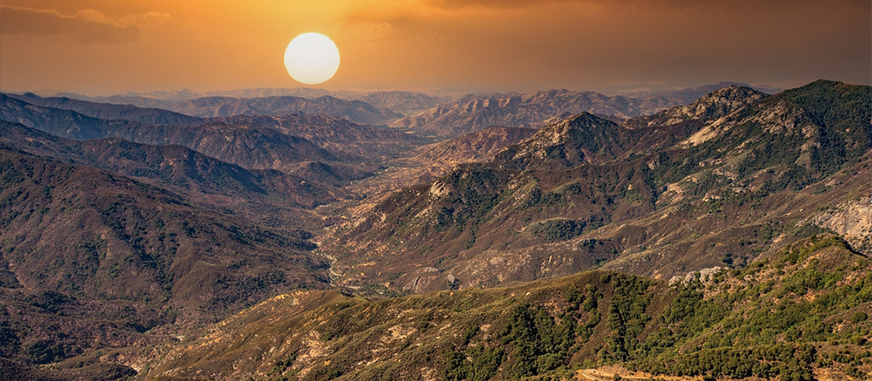The Wettest Place in India
India is home to diverse climates, from arid deserts to humid tropical regions. Among its most unique climatic extremes, Mawsynram, a small village in Meghalaya, holds the title of being the wettest place in India and one of the wettest places on Earth. Situated in the northeastern part of the country, Mawsynram receives an astonishing amount of rainfall every year, making it a must-know destination for anyone curious about extreme weather patterns.
Where is Mawsynram? Mawsynram is located in the East Khasi Hills District of Meghalaya, in the northeastern region of India. The village is about 15 kilometers from the state capital, Shillong, and is perched at an altitude of approximately 1,400 meters (4,593 feet) above sea level. The village is part of the Khasi Hills, a range of hills that contribute to the region’s heavy rainfall patterns.
Why is Mawsynram the Wettest Place? Mawsynram’s claim to fame as the wettest place in India (and one of the wettest places on the planet) is due to its geographical location and unique weather phenomena. It receives an annual average rainfall of around 11,871 millimeters (467.4 inches), although this figure can vary slightly from year to year. The primary reason behind Mawsynram’s heavy rainfall is the monsoon winds that blow in from the Bay of Bengal. When these moisture-laden winds hit the Khasi Hills, they are forced to rise. As the winds ascend, they cool and release moisture in the form of rain, a process known as orographic rainfall. This constant pattern of rain makes Mawsynram extremely wet, especially during the monsoon season (from June to September).
The Monsoon Experience in Mawsynram Mawsynram’s monsoon season is intense, with heavy rain often falling every day during the peak months of June, July, and August. This not only gives the village its record rainfall but also shapes the entire landscape. The lush greenery, waterfalls, and misty atmosphere make Mawsynram a fascinating place to visit, especially for those who enjoy the dramatic, rainy landscapes of the monsoon season. Key points during monsoon: Heavy rainfall: Average daily rainfall can exceed 500 millimeters during peak monsoon months. Cloud cover and mist: The region is often blanketed in dense clouds and mist, creating an ethereal and surreal environment. Waterfalls galore: The constant rain feeds countless waterfalls that cascade down the hills, adding to the scenic beauty.
The Impact of Mawsynram’s Rainfall The abundant rainfall in Mawsynram has a significant impact on the region’s agriculture, biodiversity, and local lifestyle: Agriculture: The locals cultivate crops such as rice, vegetables, and fruit, often adapting farming methods to cope with the heavy rain. However, excessive rainfall can also cause flooding, damaging crops and infrastructure. Biodiversity: The constant rainfall and lush forests make Mawsynram part of a rich ecological zone. The area is home to several species of flora and fauna, including rare orchids, ferns, and animals like elephants and clouded leopards. Infrastructure: The rainfall does pose challenges for infrastructure, with roads and buildings often affected by landslides and erosion. The local population has adapted to these conditions by building houses on stilts and using strong materials to withstand the heavy rain.
Best Time to Visit Mawsynram While the monsoon season makes Mawsynram a unique place to experience nature’s fury, the best time to visit is during the post-monsoon months (October to March). This is when the rains subside, and you can witness the landscape in its lush, green glory without being affected by the heavy rainfall. During these months, Mawsynram offers a cooler climate with temperatures ranging from 10°C to 20°C, making it a pleasant retreat. Visitors can enjoy trekking, sightseeing, and experiencing the rich culture of the Khasi tribe.
Things to See and Do in Mawsynram
- Nohkalikai Falls: One of the tallest waterfalls in India, Nohkalikai Falls is located near Mawsynram. The waterfall is breathtaking, especially after the monsoon, when it is at its full force.
- Sohra (Cherrapunji): Just a short drive away from Mawsynram, Cherrapunji is another town famous for its rainfall and natural beauty. Explore the many caves, waterfalls, and living root bridges in the region.
- Mawsmai Cave: Explore this limestone cave, which is one of the popular tourist spots in the area. It’s well-lit and easy to explore, offering a glimpse into the region’s geological wonders.
- Trekking and Nature Walks: Mawsynram and the surrounding Khasi Hills offer numerous trekking trails that take you through dense forests, charming villages, and mist-covered landscapes.
How to Reach Mawsynram By Air: The nearest airport is Shillong Airport, which is about 35 kilometers from Mawsynram. From there, you can hire a taxi to reach the village. By Train: The nearest major railway station is Guwahati Railway Station in Assam, about 200 kilometers away. From Guwahati, you can take a taxi or a bus to Mawsynram. By Road: Mawsynram is well-connected by road from Shillong, and the drive through the winding hills offers scenic views of the surrounding landscapes.
Conclusion Mawsynram, Meghalaya, stands as a testament to the raw power and beauty of nature. Its record rainfall, lush landscapes, and unique monsoon experiences make it a fascinating destination for those who appreciate nature’s extremes. Whether you are a monsoon enthusiast, a lover of scenic beauty, or someone seeking to experience one of India’s wettest places, Mawsynram is a destination like no other—an incredible place where rain and mist rule the land, and nature thrives in its full glory.



